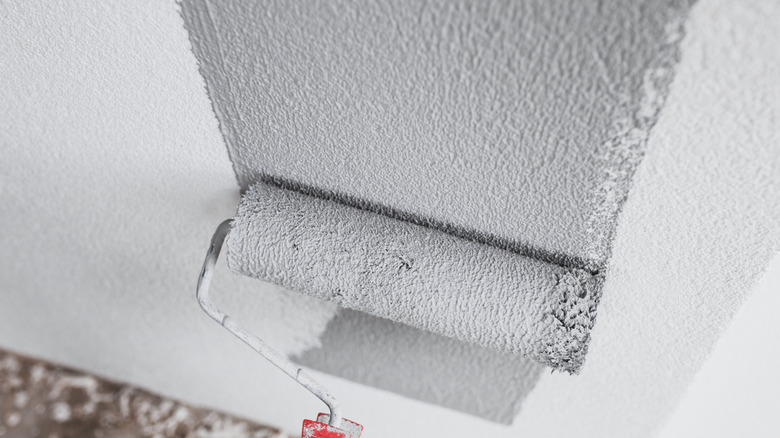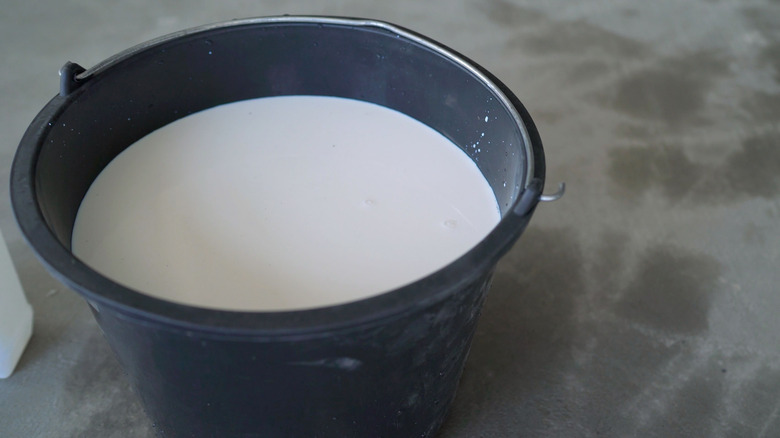The Priming Trick That'll Make Painting Your Walls A Breeze
According to Statista, up to 35% of us gave our walls a lick of fresh paint in 2020, reflecting how many of us like sprucing up our homes. Changing the color of your walls is a bold move that can help you drastically change the mood and feel of a space, and before you lather on the paint, you're going to need to prime your walls. If you're considering converting your walls from a considerably darker color, then there is one extra step that you can take to ensure that you achieve the perfect finish. So, what is it? As it turns out, adding a dash of your freshly opened paint to your paint primer could help give you more pleasing results.
For example, perhaps you're switching from a deep navy blue tone to a lighter, more neutral tone, or maybe you're spring-boarding from darker hues of red. In this case, this priming trick may work as a treat on your walls. Of course, you can still use this without dark walls. However, there are a few important tips that you should keep in mind if you decide to use these two decorative staples together. We'll explain exactly how you should utilize this trick to make priming and painting your walls a breeze.
Combine the appropriate amounts
For this priming trick, all you need to do is combine your paint and primer and apply it to your target walls as you normally would. However, when you do this, you need to ensure that you combine the correct amounts. While it may not seem important, if you do it incorrectly, it could have a negative impact on your end results. According to the house building company Gambrick, you should add no more than 15% of your paint to your priming product. If you're unsure how to do this, you should first measure the amount of primer you will use and then use a calculator to work out the measurement of paint that you will need to add. Doing so is an important step in prepping your walls for painting.
However, this isn't the only thing to consider. In addition to using the appropriate amounts, you also need to check that the two products you use contain identical bases. Again, this should help you to get the best results and coverage. The reason this trick works so well is because the primer forms an initial layer, which makes it more difficult to see the color underneath. Combining it with a touch of paint also helps to add a subtle touch of color, which slightly heightens this effect. Now all you need to do is whip out your paint, primer, and paintbrush and get painting.

